From dancing queen to Brexit woes: Theresa May’s political career as the former prime minister stands down
The former prime minister has announced her resignation after 27 years as an MP. We take a look at the most significant moments of her career.
Former prime minister Theresa May has announced that she will step down as an MP in the next general election, ending her 27-year stint in parliament.
Her resignation marks the end of a remarkable yet controversial career as a long-serving Conservative MP and the second ever female prime minister, overseeing attempts to detach the UK from the EU.
In a statement to a local newspaper in her Maidenhead constituency, Ms May said it had been “an honour and a privilege” to serve.
She added: “Being an MP is about service to one’s constituents and I have always done my best to ensure that I respond to the needs of local people and the local area.”
Here is a timeline of Ms May’s career:
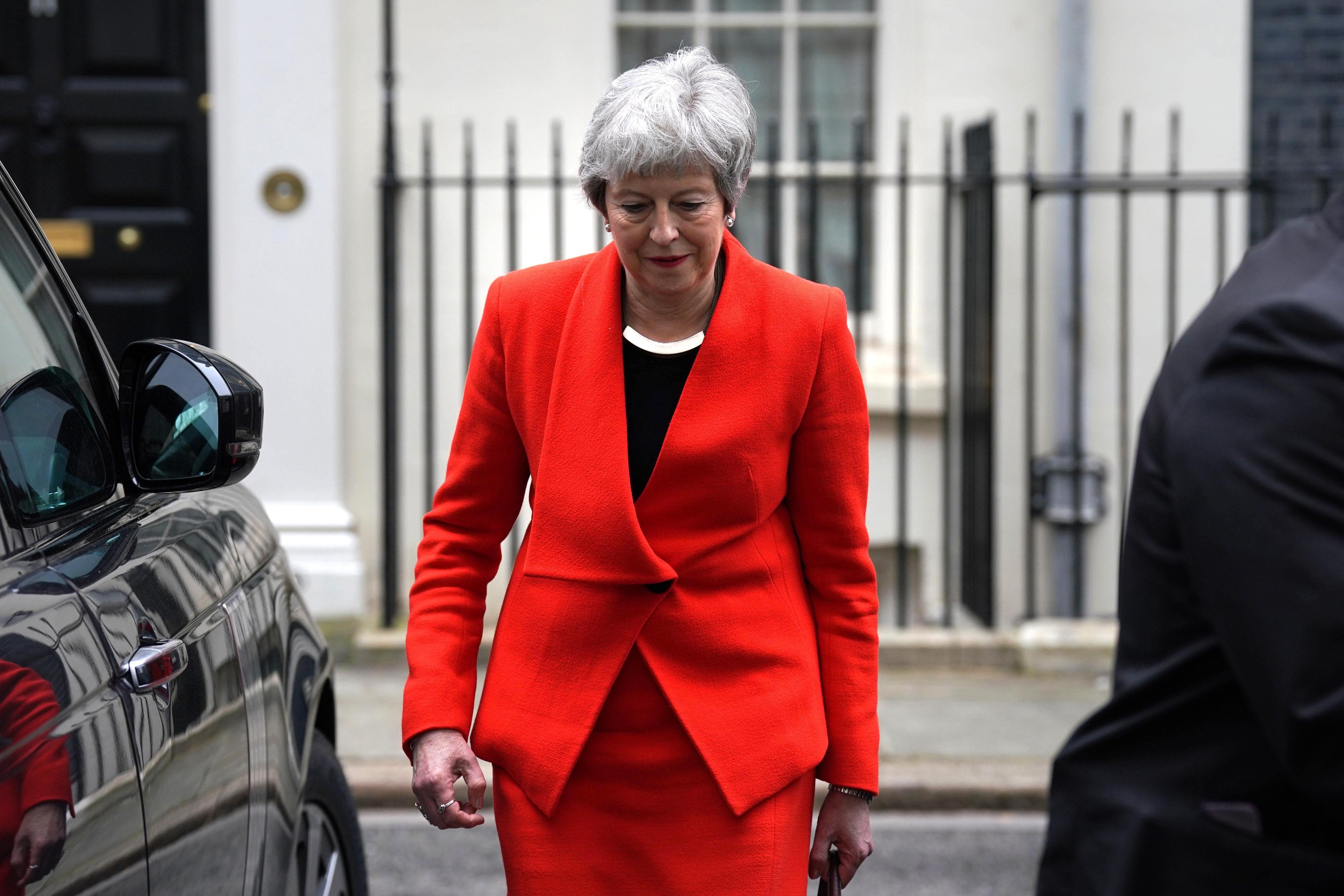
- 1997: Ms May was elected with an almost 12,000 seat majority as the MP for Maidenhead, having previously served as a councillor in Merton. Prior to this she worked as a financial consultant and adviser at the Association for Payment Clearing Services.
- 1999: She quickly begins her career in the shadow cabinet after she was appointed shadow education and employment Secretary.
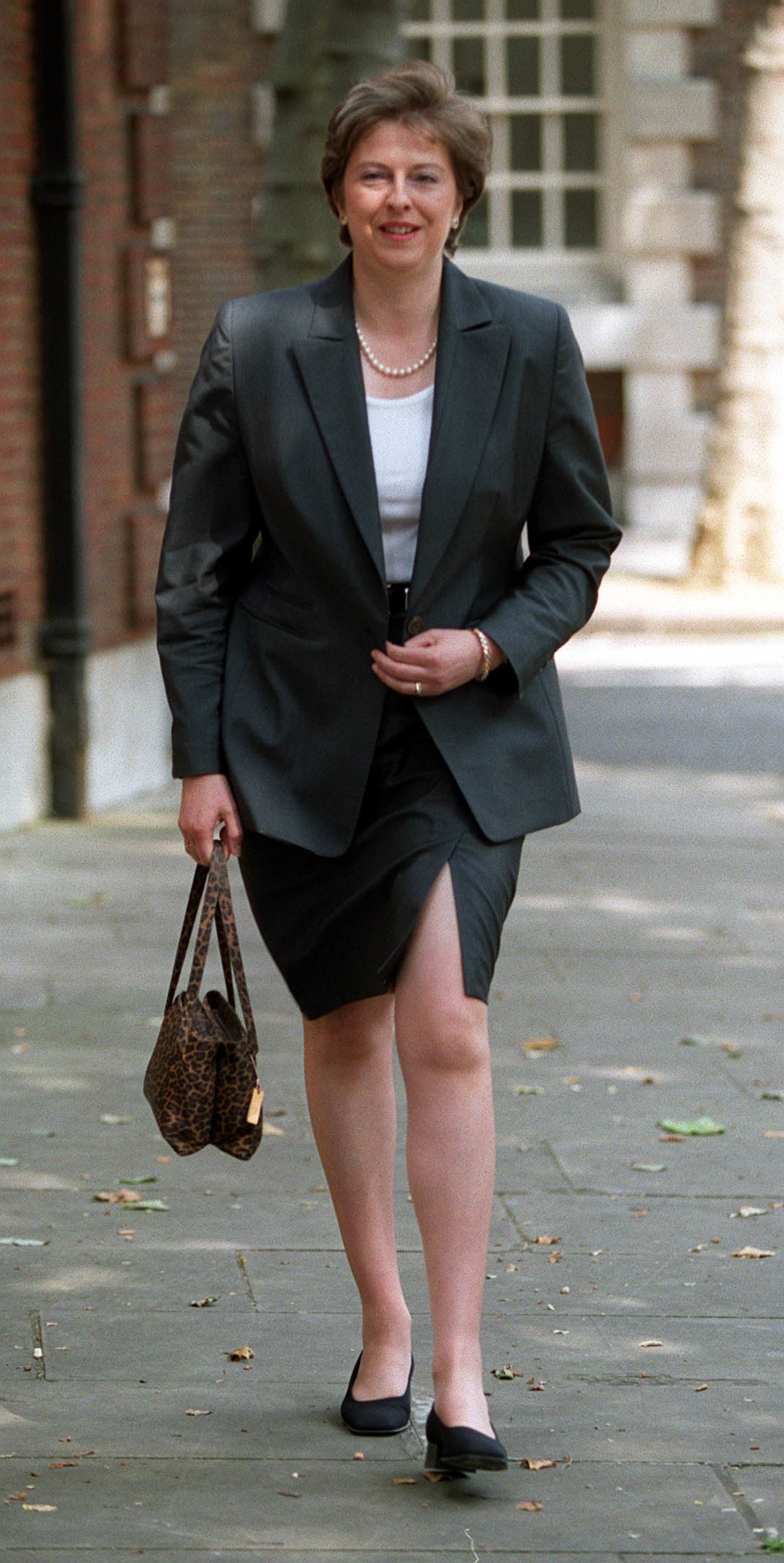
- 2002: She became the first female chairman of the Conservative party and sets the tone as a liberal in her party, a stance which does not last in her next job. In her speech at the party’s annual conference, Ms May condemned unnamed colleagues who had made “political capital out of demonising minorities” and called on her peers to rally behind their then leader, Sir Iain Duncan-Smith.
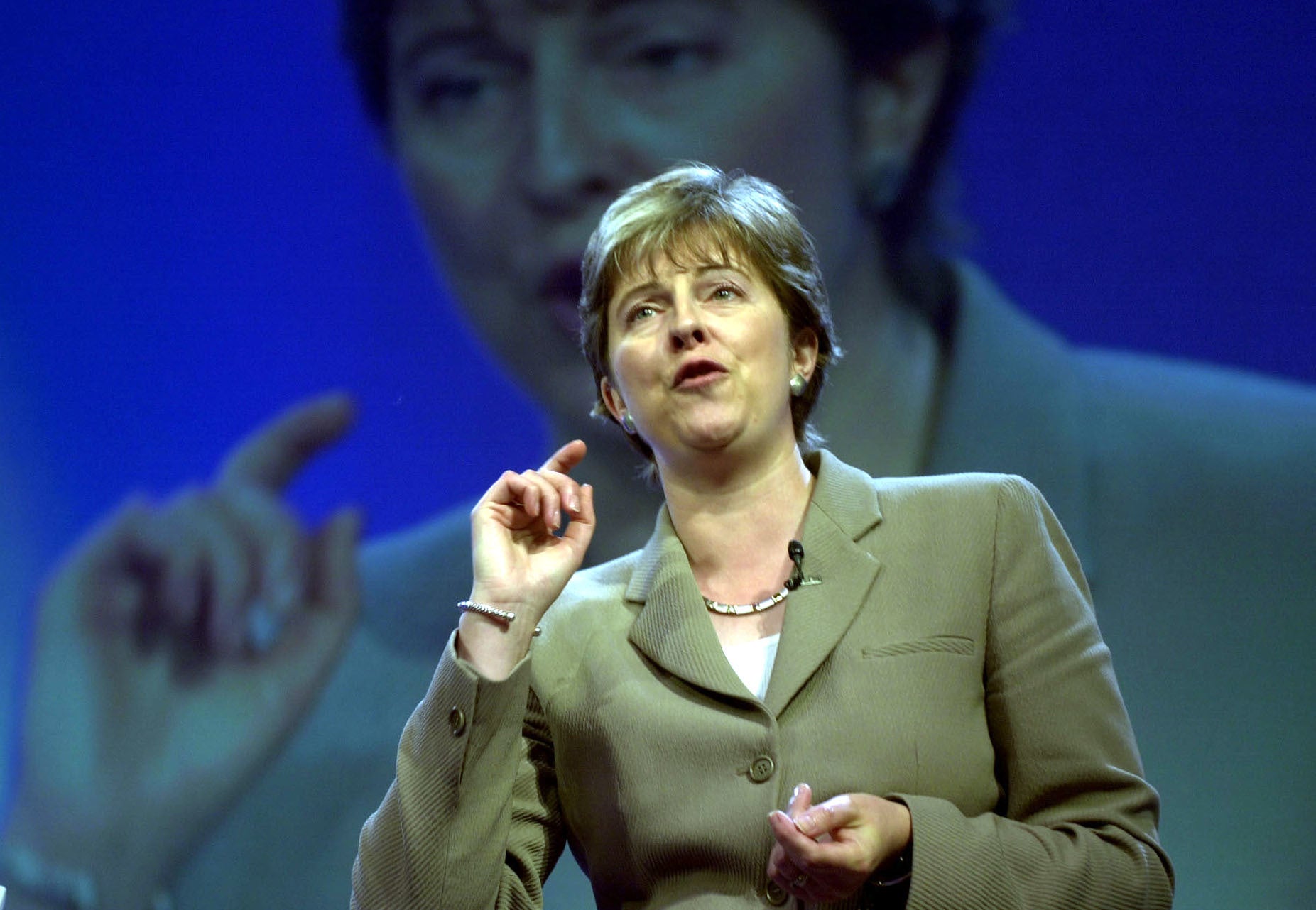
- 2005: The Tory leader David Cameron moved Ms May to a new role as shadow leader of the house of commons before later appointing her shadow minister for women and equality in 2007, and work and pensions secretary in 2009.
- 2010: As the Conservatives and Lib Dems came together to form the coalition government, Ms May is appointed home secretary, making her the fourth woman to hold one of the British Great Offices of State, which includes the prime minister, chancellor of the exchequer, and foreign secretary. Ms May held this position for over six years, with a controversial and chequered tenure.
During her time as home secretary, she adopted a mix of hard-line law and order and liberal policies. She pursued the reform of the police federation and scaled back the use of stop and search under concerns that it was counter-productive and racially divisive.
But Ms May also implemented harsher drug policies and famously introduced the Immigration Act wish was designed to “create a hostile environment” for illegal migrants.
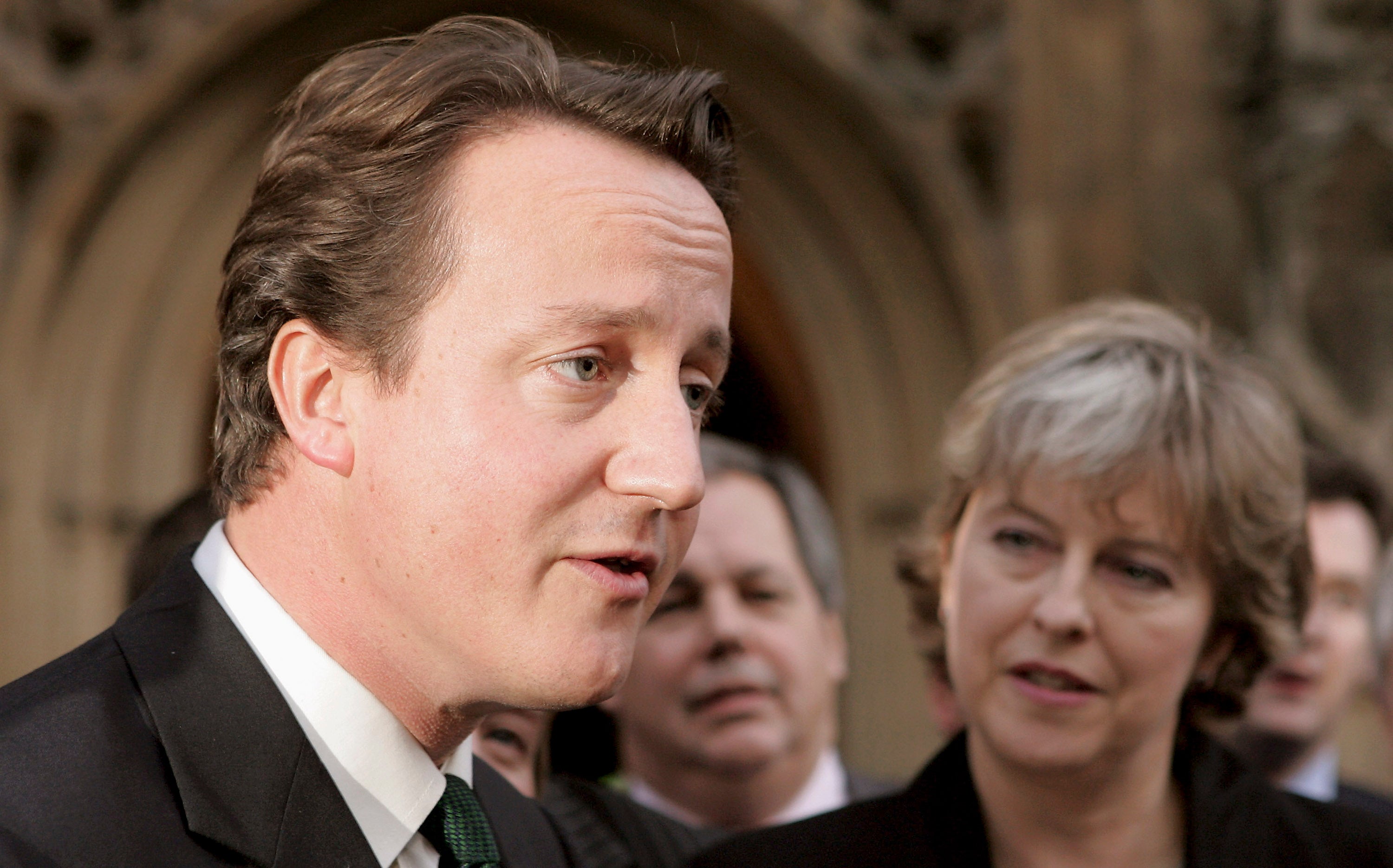
- 2013: In her role as home secretary, Ms May oversaw an advertising campaign directed at illegal migrants which saw lorries driving around communities with signs that said “go home or face arrest”. Despite her assertion that she was a liberal, ‘one-nation’ tory, the policy was widely regarded as extreme and hostile to immigrants. The shadow home secretary Yvette Cooper described the language as being reminiscent of that used by the National Front in the 1970s.
- 2016: Ms May announced that she would run for leader of the Conservative party in a bid to succeed David Cameron who resigned after he lost the EU referendum. Ms May fought off her rivals and took up role as prime minister in 2016.
Her first few months were defined by diplomacy. Following the UK’s decision to leave the EU, Ms May commenced talks with German Chancellor Angela Merkel and said she would not trigger Article 50 – the process for withdrawing from the EU – before negotiating a “sensible and orderly” departure with the union.
- 2017: In April Ms May made the misguided move of calling an early general election - a move that proved to be the beginning of the end of her leadership. The decision left her party in a worse position than previously held, having lost 23 seats. The resulting hung parliament forced Ms May to broker a deal with the Democratic Unionist Party of Northern Ireland - which became a key sticking point during Brexit negotiations due to contentions the Northern Ireland border.

- 2018: In March the Windrush scandal exploded after it was revealed that a generation of Afro-Carribean Britons had been illegally deported or threatened with deportation by the Home Office. Ms May’s Home Secretary Amber Rudd was forced to resign.
The former prime minister’s second term in office was defined by political instability and infighting. Parliament was in deadlock following Britain’s exit from the European Union.
Late in the year, Ms May gave a speech at Conservative party conference where she took the stage while dancing to “Dancing Queen” by ABBA. Some political commentators applauded her willingness to laugh at herself, whilst others deemed the footage cringe-worthy. Downing Street insisted the moves were “spontaneous”.
The then prime minister was often criticised for coming across as awkward in interviews and public appearances, leading to her being nicknamed “The Maybot”.
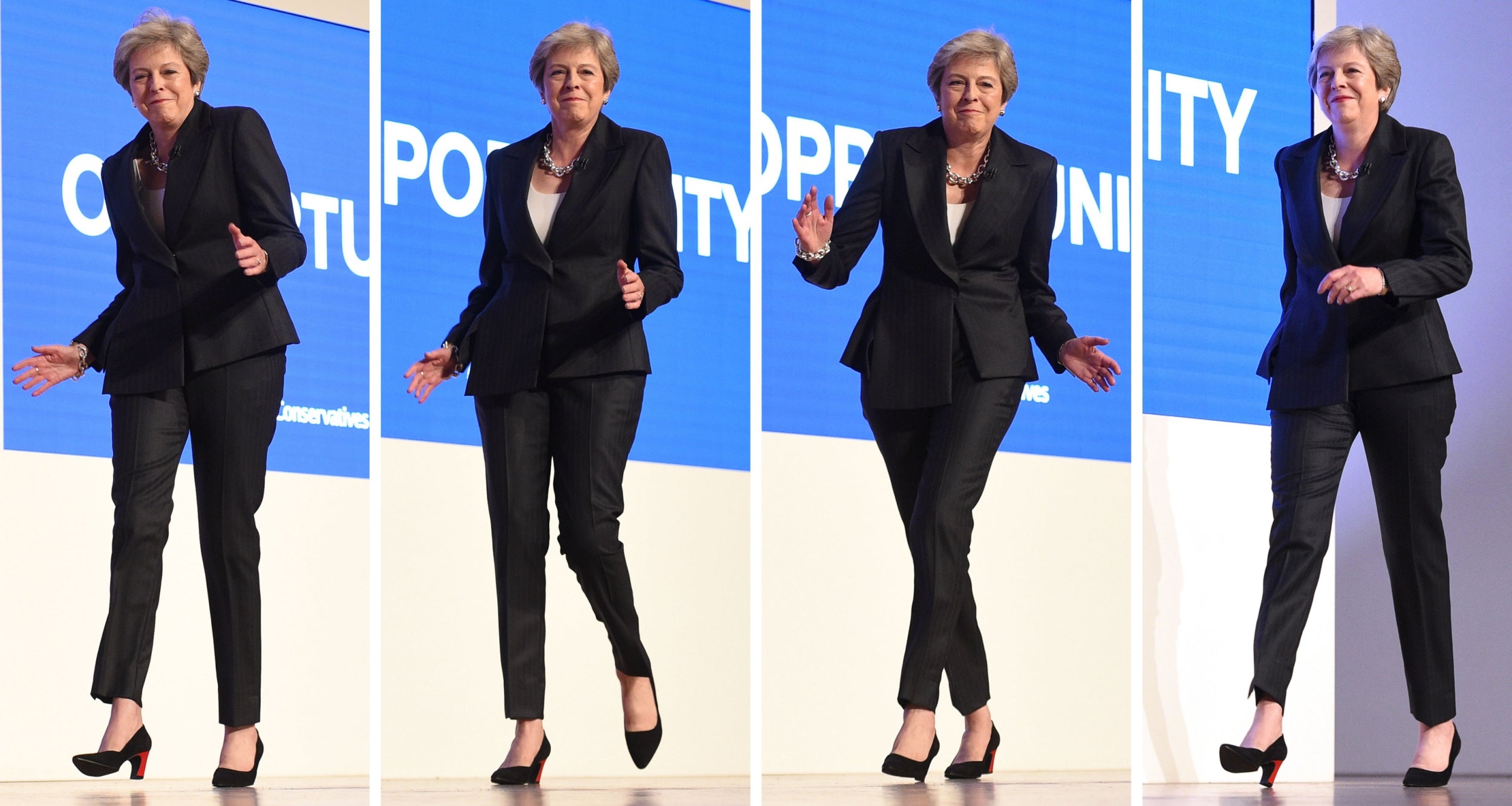
Later in the year, Ms May’s government was found to be in contempt of Parliament after it failed to provide MPs with legal advice on the proposed EU withdrawal agreement.
After pressure from Ms May’s backbenchers to adopt a hard brexit, she faced a vote of no confidence in her leadership by her party in late December. She survived the vote, but her authority was badly damaged.
- 2019: Ms May’s proposed Brexit deal was defeated in the commons, leading to a motion of no confidence in the Commons. Again, Ms May survived but only by 19 votes.
After her deal was defeated in the Commons for the third time, the prime minister took to the steps of Downing Street to announce that she was resigning as leader in May 2019.
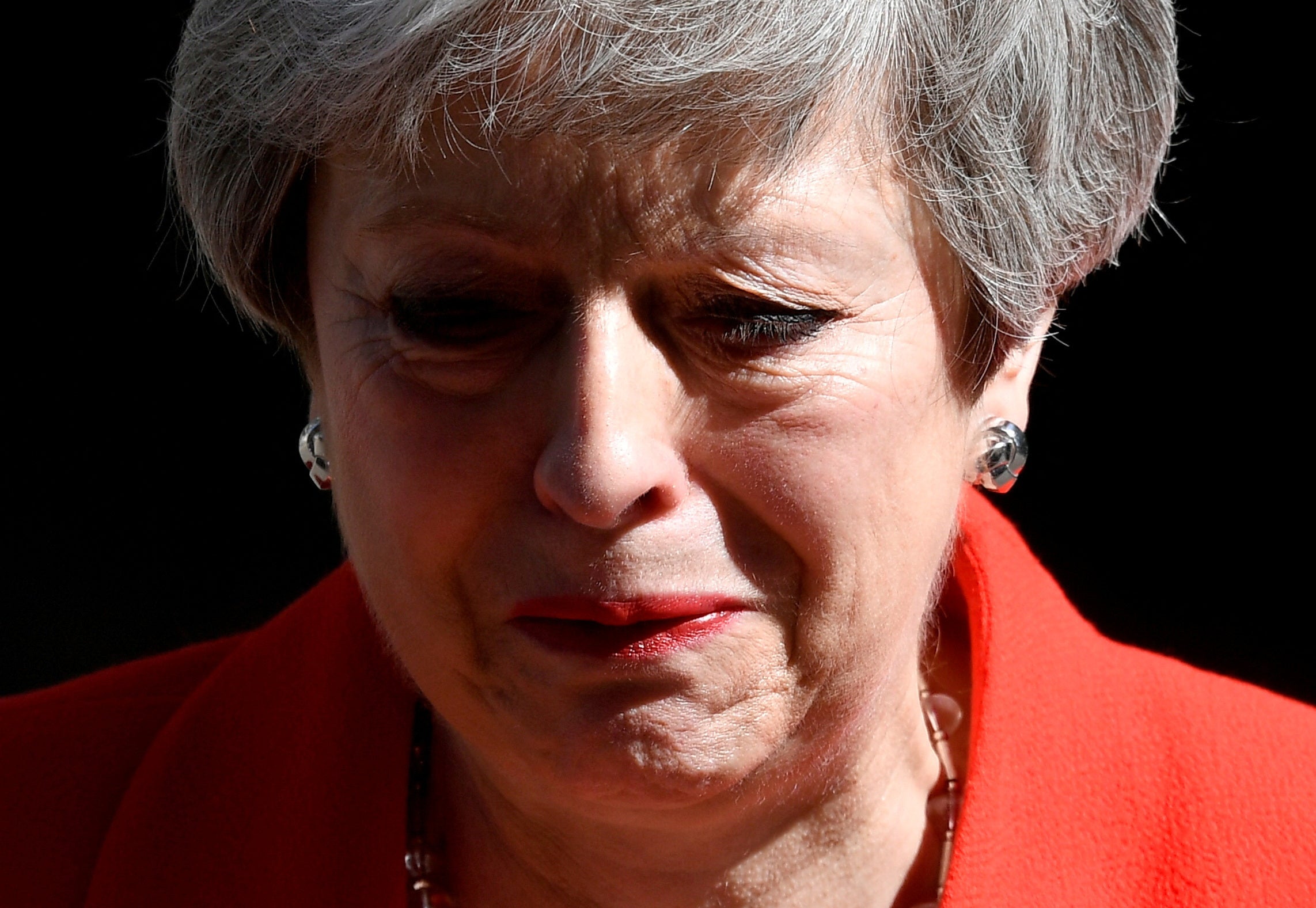
The second-ever female prime minister was succeeded by Boris Johnson, who forced through a hard brexit deal. Upon leaving the role, Theresa May took to the backbenches and has since dedicated her time to her constituency of Maidenhead and work on modern slavery and human trafficking.
The former PM has never spared an opportunity to snipe at her replacements. She criticised Mr Johnson for cutting overseas spending, telling the commons that the decision makes it “far harder for us as a country to argue for the change that we want internationally”.
She also criticised the former prime minister for his role in partygate. On the publication of the Sue Gray report into Mr Johnson’s knowledge of rule-breaking in No.10, Ms May said the public “had a right to expect their prime minister to have read the rules, understand the meaning of the rules and to set an example by following those rules.”
She asked Mr Johnson: “So either my right honorable friend had not read the rules, did not understand what they meant and nor did others around him, or they didn’t think the rules applied to No. 10. Which was it?”
The former prime minister also made headlines when she cropped Mr Johnson’s successor Liz Truss from a photo of former prime ministers commemorating Remembrance Day. Some accused Ms May of engaging in a deliberate slight against Ms Truss after her mini-budget crashed the pound, resulting in her leaving office after just 44 days.
Unlike her successors, she regularly attends PMQs and debates in the commons.
- 2024: Ms May announced her resignation to the Maidenhead Advertiser, saying it was an “honour and a privilege” to serve the constituency of Maidenhead.
She added that she remains committed to “supporting Rishi Sunak” and believes that the Conservatives can “win the election”.
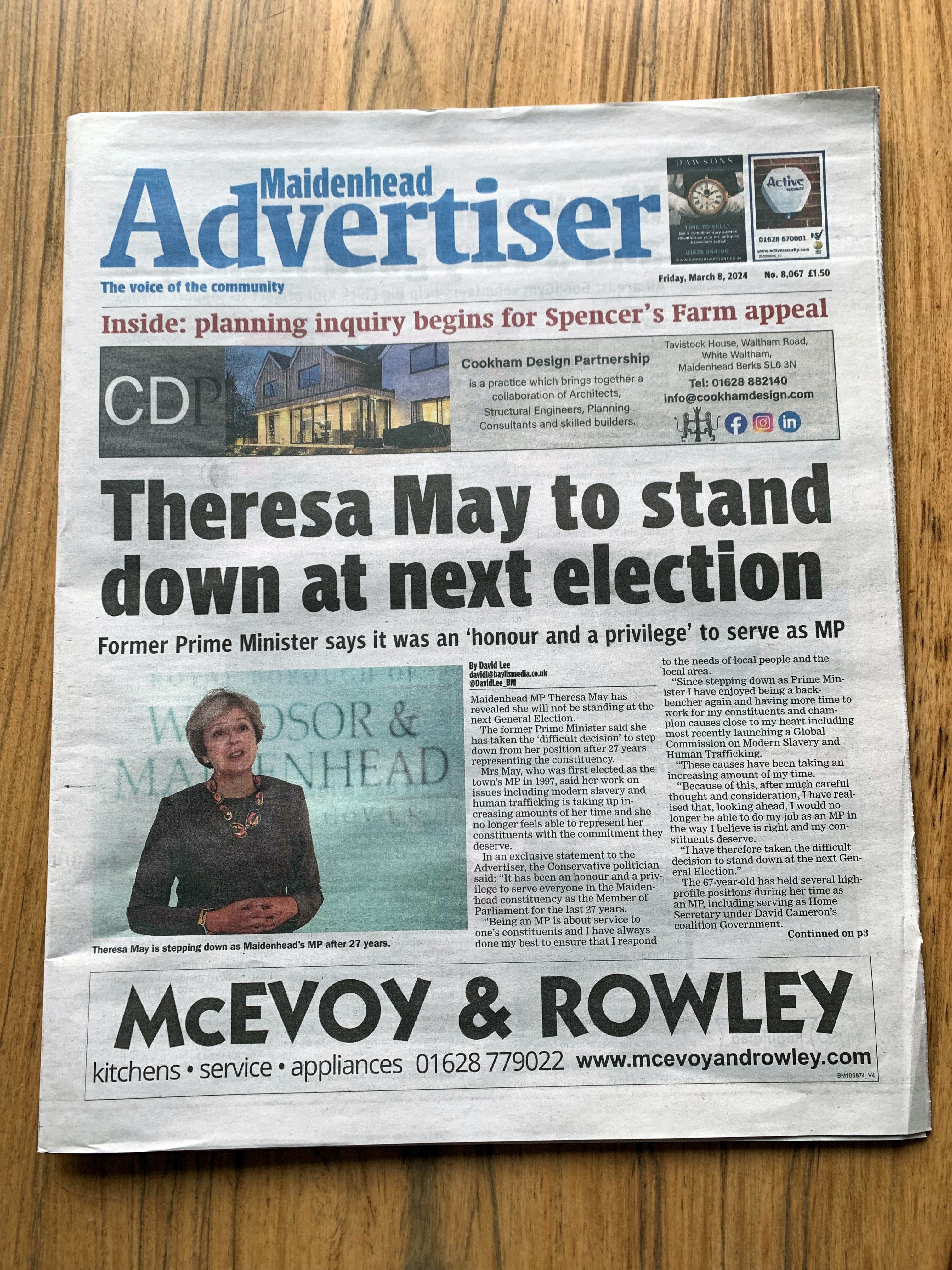
Join our commenting forum
Join thought-provoking conversations, follow other Independent readers and see their replies
Comments
Bookmark popover
Removed from bookmarks